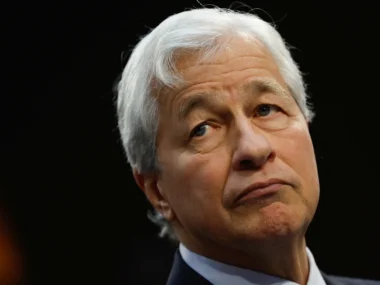The U.S. economy recorded another year of solid growth, highlighting the strength of the economy inherited by President Donald Trump from the Biden administration.
According to the latest Commerce Department data released Thursday, the economy expanded by 2.5% in 2024, comparing the fourth quarter to the same period the previous year. A strong labor market supported robust consumer spending, which accounts for about 70% of economic activity. Business investments also contributed to growth throughout the year but slowed in the final months.
In the fourth quarter, gross domestic product (GDP) grew at an annualized rate of 2.3%, slightly below economists’ 2.4% forecast, as reported by FactSet. These figures are adjusted for seasonal changes and inflation.
“Fourth-quarter GDP data capped off a surprisingly strong 2024,” said Ellen Zentner, chief economic strategist at Morgan Stanley Wealth Management. She attributed the resilience to consumer spending, wealth creation, and a stable labor market.
This report follows the Federal Reserve’s decision on Wednesday to maintain its key interest rate, after implementing three consecutive rate cuts last year. While the Fed is expected to pause further cuts for now, Chair Jerome Powell noted that the economy remains stable, with a steady labor market and easing inflation. However, he acknowledged that broader economic strength could be masking underlying financial difficulties for some groups.
Economists generally anticipate continued economic expansion in 2025, though uncertainty remains around the potential impact of Trump’s policies, including mass deportations, higher tariffs, and the extension of his 2017 tax cuts.
Details from the report
Consumer spending surged in the fourth quarter, driving overall economic growth.
Spending increased at an annual rate of 4.2%, up from 3.7% in the previous quarter. Both goods and services saw higher demand, with durable goods—such as cars and furniture—rising sharply by 12.1%.
The spike in durable goods purchases may have been influenced by consumers rushing to buy before the 25% tariffs on Mexican and Canadian imports, set to take effect on February 1 under Trump’s plan. Lower short-term interest rates may have also encouraged more spending.
However, business investment showed signs of weakness.
Nonresidential fixed investment, which reflects business spending on operations, declined at an annual rate of 2.2% in the fourth quarter, reversing the 4% growth seen in the previous three months.
“The one concern was that businesses scaled back inventory investments, possibly due to economic uncertainty under the new administration,” noted Robert Frick, corporate economist at Navy Federal Credit Union.
The economy under Trump 2.0
Donald Trump is beginning his second term with a strong U.S. economy, but his proposed policy shifts could have significant effects.
“President Trump aims to stimulate growth by maintaining low taxes and reducing regulations while introducing tariffs to strengthen U.S. manufacturing and encourage reshoring,” noted James Knightley, chief international economist at ING, in a report on Thursday. “These measures may boost economic activity, but signs of a weakening job market and slowing income growth are emerging.”
Additionally, Trump has launched a strict immigration crackdown, which economists warn could hinder growth and create challenges for businesses dependent on migrant labor.
While economic growth remains steady for now, concerns persist that Trump’s expansionary policies could drive inflation higher. If that happens, it could hurt consumers already burdened by past inflation and might prevent the Fed from lowering rates—or even prompt rate hikes instead.











